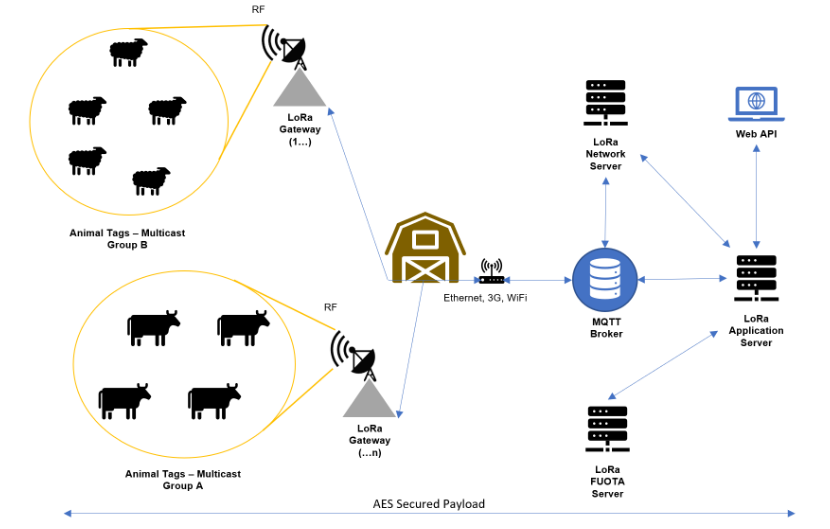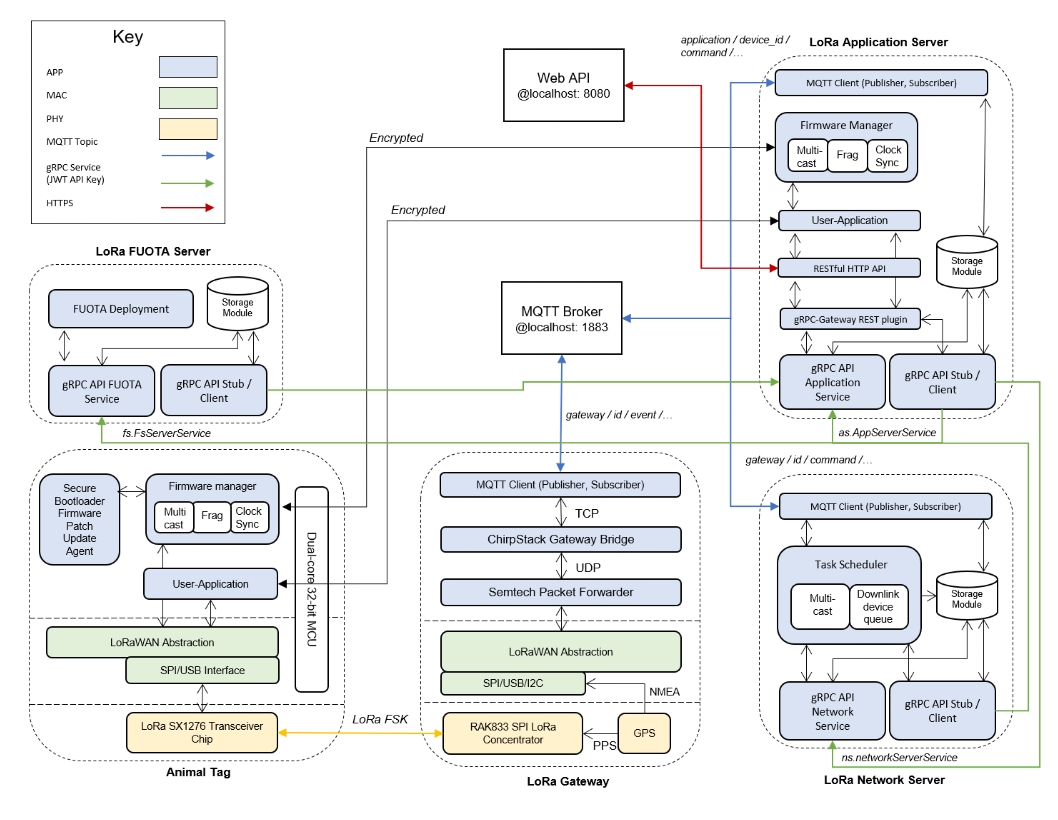ESP32 Animal Tag: FUOTA
Upland hill harming is a key pastoral farming practice integral to the prosperity of the Lake District World Heritage Site. An ESP32 based animal tag device developed by Milliamp Technologies aims to help maintain the occupancy, which in turn sustains the cultural landscape. This project develops the Firmware Update Over-the-Air (FUOTA) mechanisms and evaluates the efficacy of the animal tag in operation. Code links for this project are not available and information is limited due to a signed NDA agreement.
System Architectural Overview

The overall system framework for this project consists of animal tags that communicate with nearby gateways that are geographically distributed to cover a selected area. The basic figure above provides a simplistic overview of the interoperability between the various components that constitute this projects architecture. For a more detailed overview, selected the detailed tab above.

This higher fidelity architectural diagram illustrates a more elaborate overview of system communication over various network layers. Each system element's internal components are detailed and the interoperability between them is shown. Examples of potential subscribed and published MQTT topics, along with gRPC service messages are detailed.
